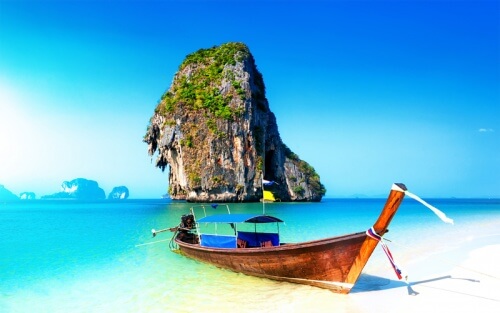
Discovering The Wild Side Of Sri Lanka National Parks
Long known as the Pearl of the Indian Ocean, the Democratic Socialist Republic of Sri Lanka is a relatively rural island that boasts a unique wild side. The Buddhist ethos of concern for all life forms is in part responsible for the great number of protected wildlife parks and nature reserves.
If you have the chance, make sure you visit at least one park to experience unspoiled nature in all its glory. Naturally, (get it?) these Sri Lankan sanctuaries need funds so you have to pay an admission charge, which varies depending on where you go. Expect to pay US$10 to $15 per person but on top of that, there’s also a service charge, VAT, as well as a charge for jeep transport around the parks. All in, expect to budget for around $50 per person.
Visit the Sri Lankan Department of Wildlife Conservation to find out more about pricing. Be warned, you can only leave your vehicle at certain designated areas in each park. No matter how pretty and peaceful the elephants appear to be, don’t risk making any formal introductions or you may be on the receiving end of a powerful slap of a trunk. Just respect their environment – you’re a visitor to their home. We’ve compiled a list of some of the best wildlife parks to visit – go wild!
- Elephants in Sri Lanka
- Elephants in Sri Lanka
- Elephants in Sri Lanka
Yala National Park
Situated on the south-east of the island, Yala National Park is really a collection of other smaller wildlife parks. Most notable among its inhabitants is an impressive leap of leopards but you can also see many of other critters. There’s over 200 species of bird, with almost 50 types of mammals and reptiles. You’ll need to keep your wits about you but you’re guaranteed fascinating visit at Yala.
Minneriya National Park (The Gathering)
If you’re in awe of the mighty elephant, then you cannot miss an opportunity to visit The Gathering, at Minneriya National Park in the north of Sri Lanka. Home to the largest gathering of Asian elephants in the world, you can watch these mighty creatures in all their glory between June and September. They may be attending an annual elephantine conference but you’ll get to see hundreds of them. Well, the most likely explanation for their descent on Minneriya is that it is the driest area of Sri Lanka.
Not only will you see elephants but you can see all kinds of animals enjoying the wild – some of these are endangered.
Birdwatching in Bundala National Park
If it’s critters of the feathered variety that makes you wild with excitement, you need to get to Bundala National Park on the south-east coast. The lagoons harbour an astonishing collection of aquatic birds. Flocks of pink flamingos in particular create a spectacular display. The wetland area provides a feast for these feathered friends and almost 200 species winter there. In 2005, its significance was recognised when it was granted a Unesco Biosphere Reserve status.
Uda Walawe National Park
Perhaps we’re biased but we’ve found more elephants, this time at Uda Walawe National Park to the mid-south of the island.
This popular tourist park is a beautiful place in which to see elephants in the wild. In addition, impressive flora are everywhere as well as many other types of mammal. Sinharaja Forrest Reserve Not far away from Uda Walawe, you’ll come across Sinharaja Forrest Reserve. This tropical rainforest is a World Heritage Site and you’ll see some of Sri Lanka’s rarest birds. Well, you may see them, as the dense rainforest scrub tends to hide the little fellas.
Have you visited any the Sri Lankan National Parks if so what was your highlight? Please discuss below in the comments box.
https://www.directtraveller.com/blog/discovering-the-wild-side-of-sri-lanka-national-parks/https://i0.wp.com/www.directtraveller.com/blog/wp-content/uploads/2015/07/Elephant-group-in-the-river-43508347-1.jpg?fit=500%2C331&ssl=1https://i0.wp.com/www.directtraveller.com/blog/wp-content/uploads/2015/07/Elephant-group-in-the-river-43508347-1.jpg?resize=200%2C200&ssl=1UncategorizedNational parks in Sri Lanka,sri lanka wild life





